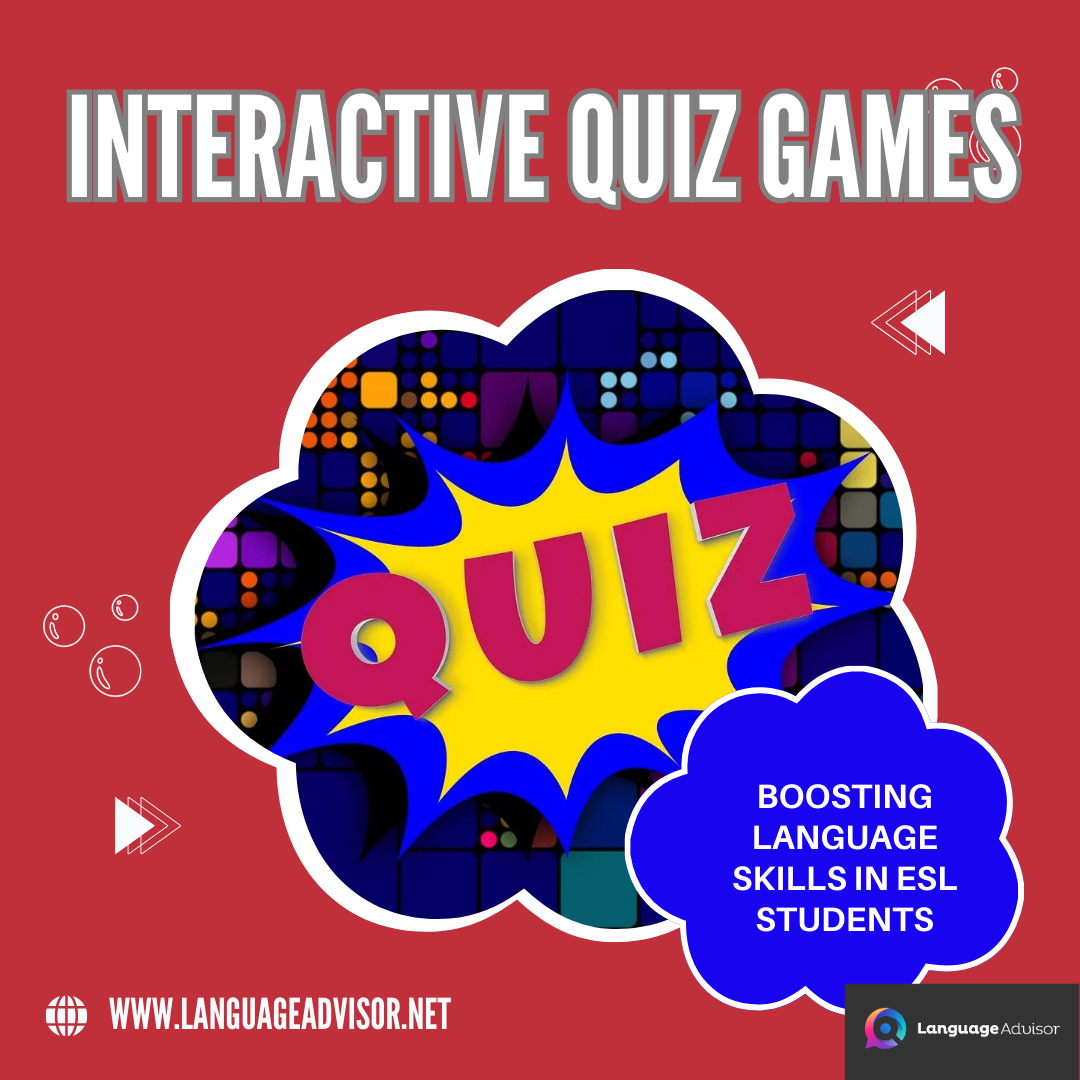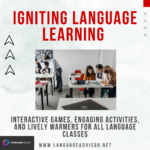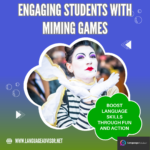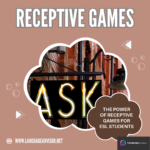Interactive Quiz Games: Boosting Language Skills in ESL Students
Interactive Quiz Games

Quiz games are a dynamic and engaging way to enhance language learning in ESL classrooms. By incorporating fun and competitive elements, these games motivate students to actively participate and apply their language skills in real-time scenarios. From improving vocabulary and grammar to fostering better communication and critical thinking, quiz games offer a versatile tool for language teachers. In this blog post, we’ll explore several quiz game ideas that can make learning a new language an exciting and rewarding experience for students.
Interactive Quiz Games

ESL Quiz Game
This ESL quiz game works well with large classes. You will need to have a list of questions. There should be five questions for each category with each question being of varying difficulty.
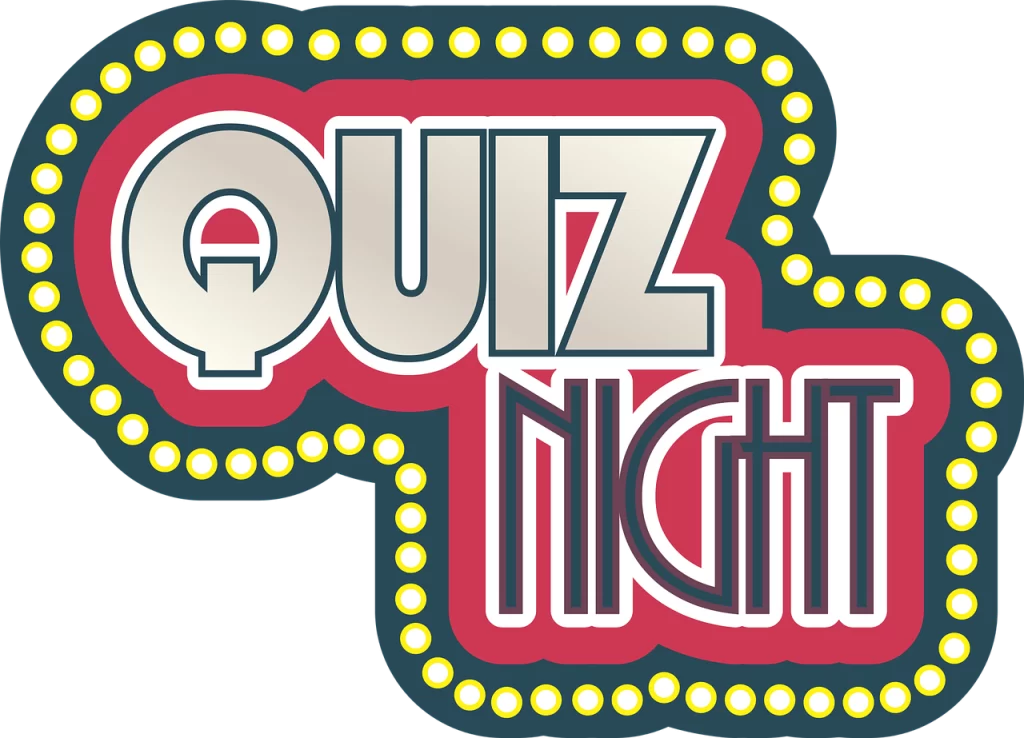
- Age/Level: Any
- Time: 25 minutes
- Players: 4 teams
- Preparation: A list of categories with five questions per category
- Aim: To answer questions based on a category
Procedure
Put the students into four teams and have each team choose a name. Draw a 6 x 6 table on the board. Label each column with a points value. Label each row with a category, such as grammar, places, movies, countries, etc. Tell the class that the categories represent the types of questions and the points represent the difficulty of the questions.
Explain to the class that you will start the quiz off with a question.
The first student to put up their hand and answer correctly wins the square.
Make it clear to the students that any student can answer any question. Also, explain that they must put up their hand to answer and must answer in the form of a sentence. Once the question is answered correctly, write the winning team’s name in the square.
The winning team gets to choose the next category and point value for all the teams to try to answer.
Example:
| Categories | 100 | 200 | 300 | 400 | 500 | 1000 |
| Sports | ||||||
| Verbs | ||||||
| Movies | ||||||
| Grammar | ||||||
| Places | ||||||
| Adjectives |

Guns, Bombs and Angels
This entertaining game can be played as a general knowledge ESL quiz. It can also be used to review what the students have been learning in class, or you can use it to revise question and answer forms. Before you begin, you will need to prepare a list of questions and a grid.

- Age/Level: Any
- Time: 20 minutes
- Players: 4 teams
- Preparation: A list of questions and grid
- Aim: To answer general knowledge or review questions
Procedure
Separate the class into four teams and assign each team a number.
On the board, draw a grid with numbers at the top and letters at the side. Also, draw a scoreboard for the four teams. Draw five stick men next to each team’s number. Each stick man represents a life.
On the board, you should also draw a big gun, small gun, a bomb, and an angel.
- Big gun = Take two lives.
- Small gun = Take one life.
- Bomb = Lose a life.
- Angel = Win a life.
Explain to the class that behind each square on the grid is a big gun, small gun, a bomb, or an angel. Before they can choose a square, they must answer a question correctly.
The teams play in order and the winning team is the one left standing. Example:
- Teacher: What is the capital of Thailand?
- Student in Team 1: The capital of Thailand is Bangkok.
- Teacher: Well done. Choose a square.
- Team 1: B5.
Teacher: (Looks at his/her hidden grid and sees a big gun in that square. The teacher draws a big gun in the B5 square) It’s a big gun. Now take two lives from another team.
Team 1: (Thinks and then chooses Team 3) We choose Team 3. Teacher: (Deletes two stick men from Team 3) Ok, Team 2. It’s your turn.
If a team answers incorrectly, just move on to the next team.
| 1 | 2 | 3 | 4 | 5 | |
| A | |||||
| B | |||||
| C | |||||
| D | |||||
| E | |||||
| F | |||||
| G |




Join the Dots
This is a strategic ESL quiz game for students of all ages.

- Age/Level: Any
- Time: 25 minutes
- Players: 3 teams
- Preparation: A list of questions
- Aim: To answer questions
Procedure
Divide the students into three teams.
Draw a 6 X 6 grid using 7 dots across and 7 dots down. Draw the dots about three inches apart so that they can be easily seen by the students. You will need a different colored pen for each team playing.
Team A answers a question. If they are correct, they get to connect two of the dots with a line. Repeat with Team B, and so on.
The object of the game is to join the dots together either horizontally or vertically to make squares. When a square is formed as a result of drawing the fourth line, that team writes their team’s letter in the square, and they get another turn.
The game is over when the 36 squares are completed. The winner is the team with the most squares. The number of dots depends on how long you want the game to last. Don’t make it too many; otherwise, the game will go on for a long time.


Who Wants to be a Millionaire – Free Power Point
DOWNLOAD THE POWER POINT FOR FREE

Integrating quiz games into your language lessons can transform the learning experience for ESL students. These games not only make the process enjoyable but also reinforce key language concepts through practice and repetition. By creating an interactive and supportive classroom environment, quiz games help students build confidence and proficiency in their language skills. Try incorporating some of these games into your curriculum and watch your students thrive as they engage with the language in a fun and meaningful way.

Interactive Quiz Games. Also check out these quiz games


